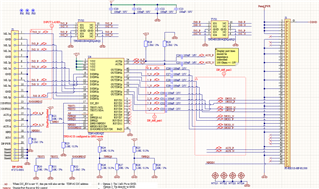Tool/software:
Hello,
I am using TDP142 linear redriver in GPIO config mode, which means the gain is configured with resistors attached on EQ1 and EQ0.
There were a few times that I managed to get video on the display, but once I turned off and the on (reset) of the driver board, there is no more video on the display.
That happened after let' say 20 times, where the PC just detect the monitor, but there is no resolution recognized. The strange thing is that sometimes, the driver transfers video, but it is not stable, and it is not repeatable, I mean once I turn the power OFF, and then ON, there is no longer video streaming.
In terms of schematic,
I am attaching here the schematic, if someone could help with reviewing the schematic would be quite beneficial.


